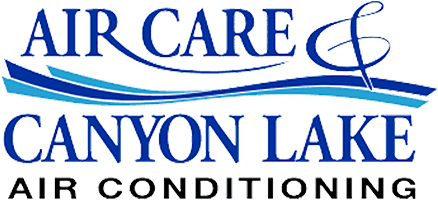
When it comes to allergies, springtime doesn’t mess around, especially in Texas. Our state has some seasonal allergies to reckoned with. In fact, Canyon Lake, Dallas, Austin, Houston, El Paso, and McAllen all made the Allergy and Asthma Foundation of America’s list of worst cities in the U.S. for spring allergies.
For Texans who’d like to avoid drowsiness-inducing medication, fortunately, there are some simple changes that can be made around the house to help with allergies. We’ve divided these housekeeping tips into the following time-based categories:
Daily
Weekly
Monthly
Occasionally
Give these a try, and enjoy improved indoor air quality and a more hypoallergenic home!
Daily Tips
Remove Your Shoes Indoors
This is a healthy practice all around, whether someone in your household suffers from allergies or not. When you wear shoes throughout your home, whatever they picked up outside they are now bringing inside. This could be allergy-triggering dust and pollen or even E. coli bacteria or fecal matter, according to a study conducted at the University of Arizona. Think about it--do you really want to wear the same shoes you wore in a public restroom in your kitchen, living room, or bedroom?
Run Your Bathroom Fan
The excess moisture and humidity in bathrooms can make them a prime location for one of springtime’s biggest allergens: mold. To prevent mold spores from resulting in mold growth in your bathroom, be sure to run your bathroom’s fan for at least 30 minutes after you shower.
Weekly Tips
Vacuum with a HEPA Vacuum Cleaner
Common allergens, including pollen, dander, and mold, can be picked up by a decent vacuum cleaner, but you’ll need a HEPA (High-Efficiency Particulate Air) vacuum to pick up extremely small particles. Whereas some vacuums simply stir up allergens from rugs and carpeting, 99.97 percent of all airborne particles larger than 0.3 microns are trapped by an authentic HEPA filter. A good quality HEPA vacuum will not only trap fine particles of dander (AKA. dust mite munchies) but even pick up allergy-triggering dust mites themselves.
Launder Your Sheets, Pillowcases, and Duvet Cover/Comforter
For allergy-prone individuals, this must become a housekeeping habit. Just like your shoes can track in pollen and dust from outside, you can carry those allergens inside on your clothes as well and even transfer them to your bed. In addition, humans constantly shed skin cells (dander), which is the essential dust mite diet, and beds can provide a warm, humid environment in which dust mites thrive best.
The solution: launder your bedding. If you have particularly sensitive skin, launder with a fragrance-free detergent.
Dust, But Not With Feathers!
When you dust, be sure to wear a mask and to refrain from using fluffy or feathery dusters when possible. Instead, opt for microfiber dust cloths, as they will do a better job of grabbing onto dust particles. Don’t forget to dust your computer, TV, baseboards, and any pictures up on the walls.
Monthly Tips
Clean Your Window Coverings
Whether you use blinds, shades, or curtains, your window coverings will pick up pollen, dust, and mold spores, particularly when you open the windows during spring to let in a breeze. Wipe down wooden or plastic window treatments with a microfiber dust cloth. If your curtains are not machine washable (check the tag), vacuum them with your vacuum upholstery attachment.
Dust Your Ceiling Fan
Using your ceiling fan can be a great way to cut down on your air conditioning bill, but it can worsen your allergies if the blades are spreading dust around every time you turn it on. Standing on a reliable surface, dust the outside of the motor housing and the often-forgotten tops of the ceiling fan’s blades.
Occasionally…
Change Your HVAC System’s Air Filter
Your air filter should be changed at least every 90 days or sooner if you own one or more pets. Not only do clean filters perform better, but they also keep your HVAC system from breaking down due to lack of proper airflow. When changing out a disposable air filter, put the old, dirty filter into a trash bag and tie off the bag to prevent allergens from floating off of the filter on the way to the garbage can.
Get Your Air Ducts Professionally Cleaned
Air duct cleaning is an often overlooked aspect of housekeeping and maintaining healthy indoor air quality. Over the years, air ducts can accumulate quite a bit of dust and dander, even mold, and each time your HVAC system runs, the air that’s pushed through your ductwork circulates those allergens through your home. Though duct cleaning is not something most people need on a yearly basis, if it’s been a few years since your air ducts have been cleaned or if your home has undergone some recent renovations, it’s probably time to look into it.
To Go the Extra Mile: Install an Air Purification System
An air purification system installed directly into your HVAC system will help relieve allergies caused by airborne irritants. With the technology used in systems like The award-winning REME HALO®, bacteria, VOCs, mold spores, and even viruses are broken down and destroyed by ionized hydrogen peroxide on contact. This particular system also adds a charge to dander, pollen, and dust that causes these particles to cling together, thereby increasing in size, which makes them easier for your air filter to trap.
If upcoming allergy seasons in Canyon Lake continue to worsen, as seen in recent years, an air purification system for your home could be a worthwhile investment.
If you’re ready to take your indoor air quality to the next level, contact Air Care & Canyon Lake Air Conditioning to learn more about systems like the REME HALO®.

